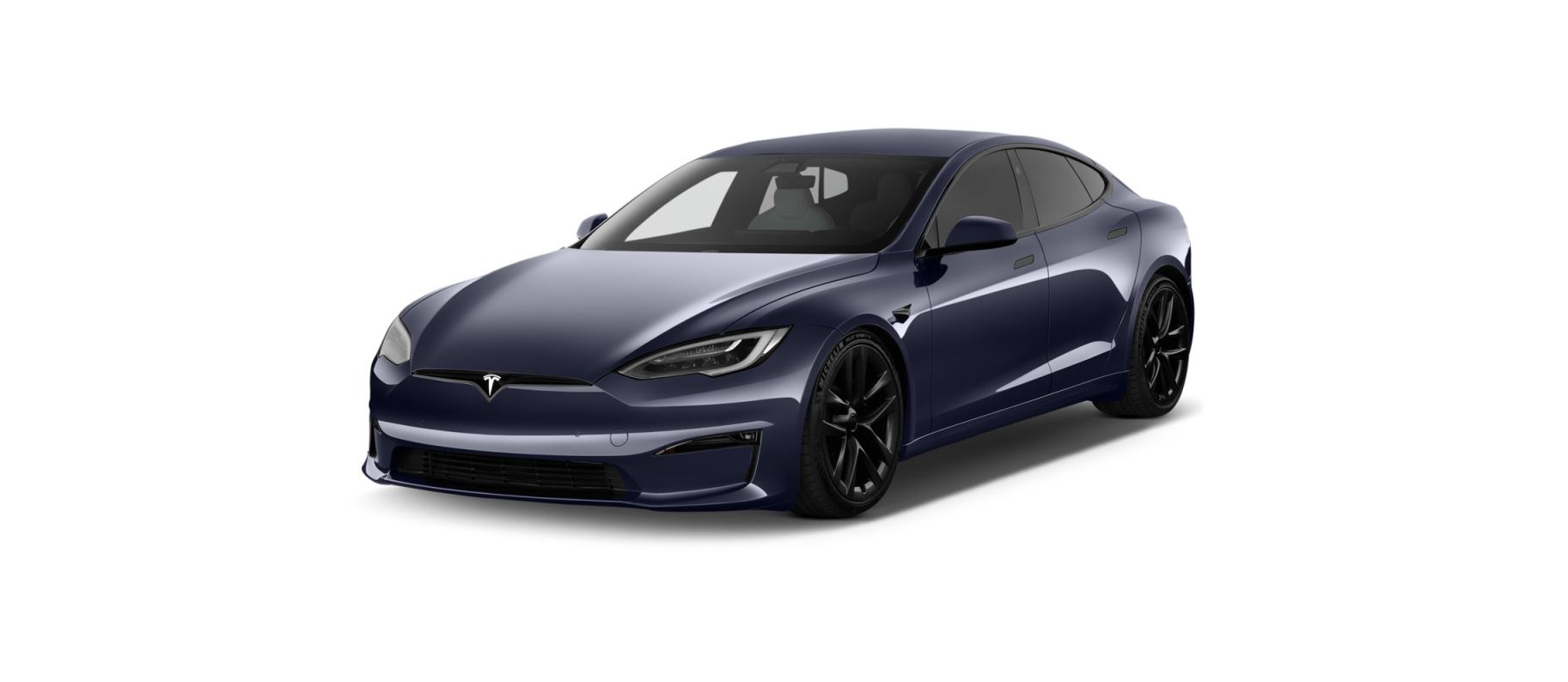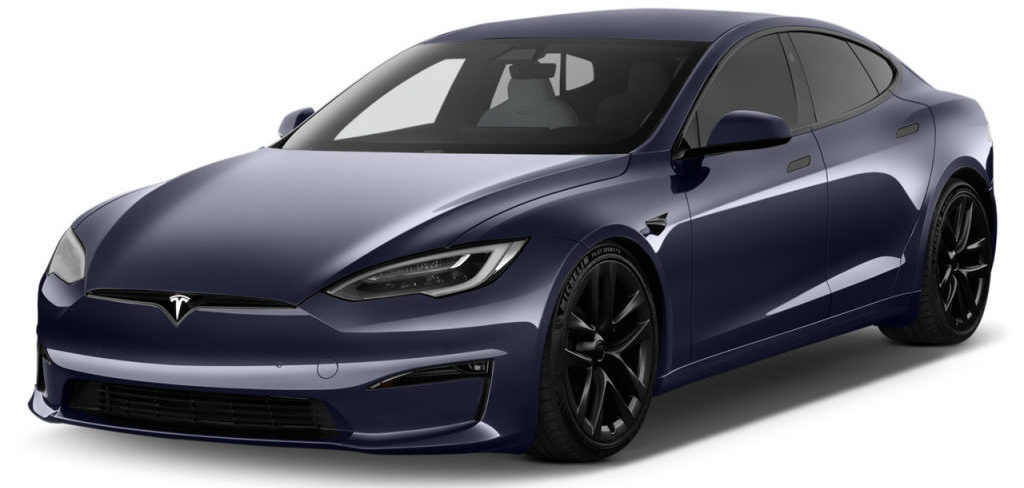2021 Tesla Model S Interior Storage and Electronics
Center Console
In addition to housing an RFID transmitter that reads key fobs and key cards (see Keys), the center console includes cup holders, two storage compartments, wireless phone chargers, and a rear touchscreen.
To open the main storage compartment, pull its cover upward. Open the front storage compartment by sliding its cover forward.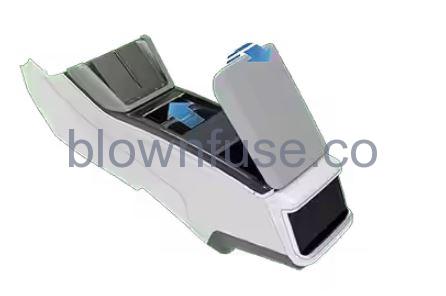
Second Row Console
Your Model S has a rear console integrated in the center of the second row. This console can serve as an arm rest for rear passengers.
To lower the console, press the button on the back of the center seat’s headrest. To raise the console, push it all the way upwards.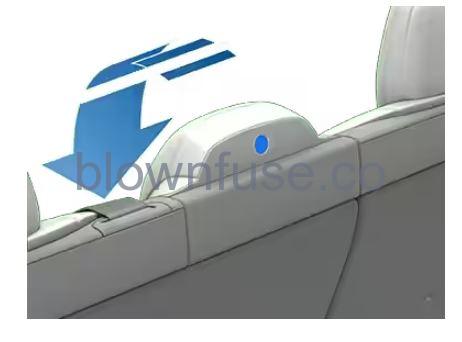
To access the storage tray and wireless phone charger (see Wireless Phone Chargers), raise the cover by pressing the latch on the underside of it and pulling it up.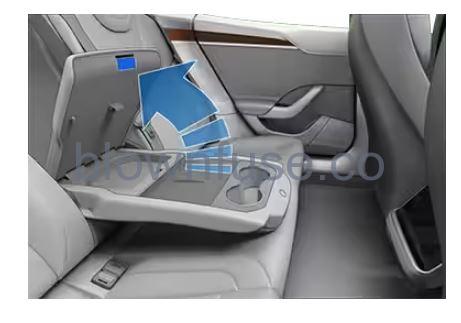
Glovebox
To open the glovebox, touch . The glovebox automatically opens and the light turns on.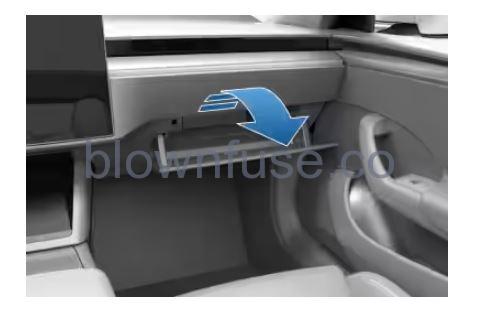
To close the glovebox, push it upward until it latches into the closed position.
For additional glovebox security, touch to set a 4-digit PIN (see Glovebox PIN).
USB Ports
Model S has five USB ports:
- Two USB ports are located in the front compartment of the center console. These can be used to charge USB devices and to play audio files from a phone or USB device (see Playing Media from Devices).
- Two USB ports are located below the rear touchscreen that can be used to charge USB devices.
- One USB port is located inside the glovebox. This port is equipped with a USB flash drive. The secure location of this USB port makes it ideal for saving Sentry Mode and Dashcam video footage.
To access the front USB ports, open the front compartment of the center console. The front USB ports are located on the rear wall of the compartment: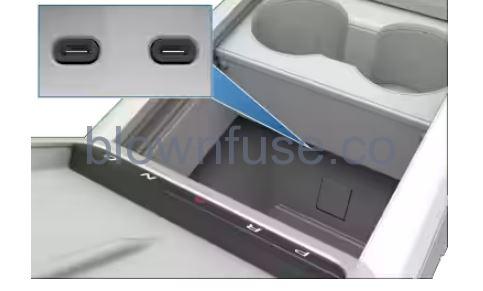
Rear USB ports are located below the rear touchscreen: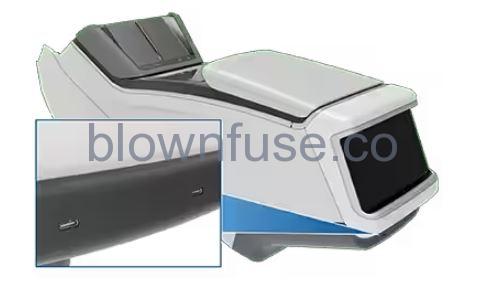
Glovebox USB port: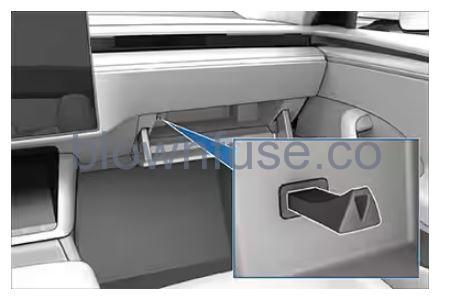
USB Drive Requirements for Recording Videos
One or more features on your Model S requires the use of a flash drive (for example, Dashcam, Sentry Mode and Track Mode (if equipped) that meets these requirements:
- Minimum storage capacity of 64 GB. Use a flash drive with as much available storage as possible. Video footage can occupy a large amount of space.
- A sustained write speed of at least 4 MB/s. Note that sustained write speed differs from peak write speed.
- USB 2.0 compatible. If using a USB 3.0 flash drive, it must support USB 2.0.
- Properly formatted (described below).
Formatting a USB Flash Drive
To save and retrieve video footage, Model S requires a USB flash drive formatted as exFAT, MS-DOS FAT (for Mac), ext3, or ext4 (NTFS is currently not supported). For use with Dashcam and Sentry Mode, the flash drive must contain a base-level folder called TeslaCam and for use with Track Mode (if equipped), the flash drive must contain a base-level folder called TeslaTrackMode.
Model S can format a USB flash drive for you. Insert the flash drive into a front USB port, and touch . Doing so automatically formats the drive as exFAT and creates a folder for TeslaCam and TeslaTrackMode (if equipped). The USB flash drive is now ready to record and save video footage. Format USB Drive is available only when a USB flash drive (with one or fewer partitions) is inserted into a front USB port. Choosing a Format USB Drive erases any existing content on the flash drive—before using this feature, you must move any content you want to keep to a different device.
If Model S is unable to format the flash drive, you must format it using a computer. Remember to manually create the TeslaCam folder, and the TeslaTrackMode folder (if equipped).
You can also format the USB flash drive with a computer to use a single flash drive for Dashcam, Sentry Mode, Track Mode (if equipped), and audio files. Create separate partitions on the drive formatted as exFAT; for example, one for Dashcam and Sentry Mode (you must create the TeslaCam folder), one for Track Mode (create the TeslaTrackMode folder), and an audio partition.
Once the USB flash drive is formatted and contains the necessary folder(s), insert it into a front (or glovebox, if equipped) USB port. Do not use a rear USB port— these are used only to charge USB devices. Once inserted, it can take up to 15 seconds for Model S to recognize the flash drive. When recognized, icons for Dashcam and Sentry Mode are available when you touch Controls and your vehicle is ready to record videos. You may need to first enable Sentry Mode (if equipped) by touching .
Viewing Video Recordings
You can view recorded footage on the touchscreen when Model S is in Park. Touch the Dashcam icon located in the app launcher or the Dashcam icon on the Controls screen. Touch the menu icon in the top corner of the screen. The tabs display a list of all video clips, organized by location and timestamp. Pause, rewind, fast forward, and delete video recordings as needed. You can also navigate to to delete all dashcam and Sentry Mode footage, including recent and saved clips.
You can also view video footage by removing and inserting the USB flash drive into a computer and navigating to the TeslaCam or TeslaTrackMode (if equipped) folder.
The TeslaCam folder contains three sub-folders:
- Recent Clips: When recording, Dashcam continuously saves footage to Recent Clips in 60-minute cycles. Footage is overwritten every hour unless you manually save it. Four videos are recorded for each clip, one from each camera (front, rear, left, and right).
- Saved Clips: Contains all recordings that are saved using Dashcam.
- Sentry Clips: Contains the last 10 minutes of footage from all Sentry Mode events that triggered an Alert or Alarm state. If storage space on the USB flash drive becomes limited, the oldest Sentry Clips are deleted to provide space for new ones. Once deleted, you cannot retrieve them.
When the USB flash drive runs out of storage space, video footage can no longer be saved. To prevent the flash drive from getting full, regularly move saved videos to another device and delete them from the flash drive.
Wireless Phone Chargers
Wireless phone chargers are integrated into both the front and rear consoles, each providing up to 15W of power to charge Qi-enabled phones. Simply place your phone on the charger. Your device may feel warm while charging, but this is a normal effect of inductive charging.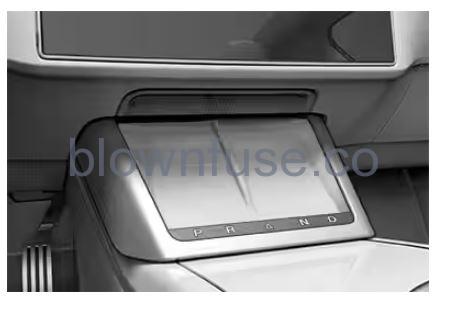
When placed on the wireless charger, your phone charges whenever the vehicle is powered on (the touchscreen is on and you are in the vehicle). Your phone does not charge when you leave the vehicle unless a feature, such as Sentry mode is enabled.
Low Voltage Power Socket
Your Model S has a power socket located in the center console’s rear compartment. To access the low voltage socket, open the front compartment of the center console.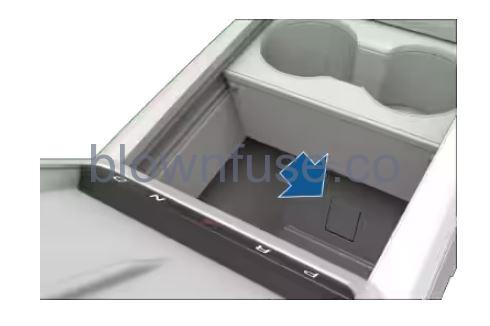
The power socket is suitable for accessories requiring up to 12A continuous draw (16A peak).
Coat Hangers
Your Model S has a coat hanger on each side of the vehicle above the rear window in the second row, next to the reading light. Push the coat hanger to release it. Push it again to retract it.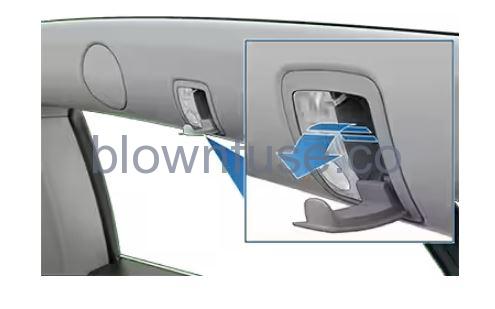
Active Road Noise Reduction
Model S is equipped with Active Road Noise Reduction which reduces low-frequency road noise while driving on rough surfaces. To accomplish this, the vehicle uses the seat microphones to measure noise in the cabin, then generates anti-noise through the speakers to intelligently create quiet zones around each occupant depending on vehicle and environmental factors.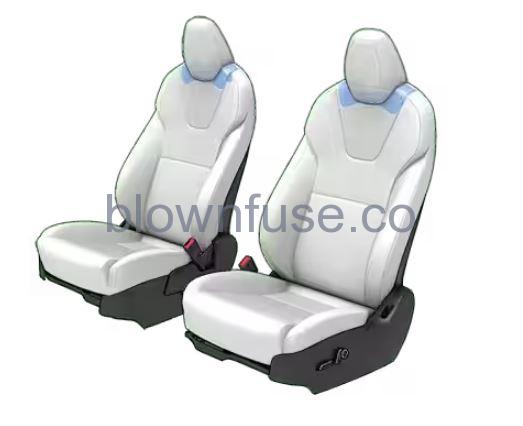
To turn Active Road Noise Reduction on or off, open the Media Player and touch . This may require several minutes of driving time to calibrate before enabling.
